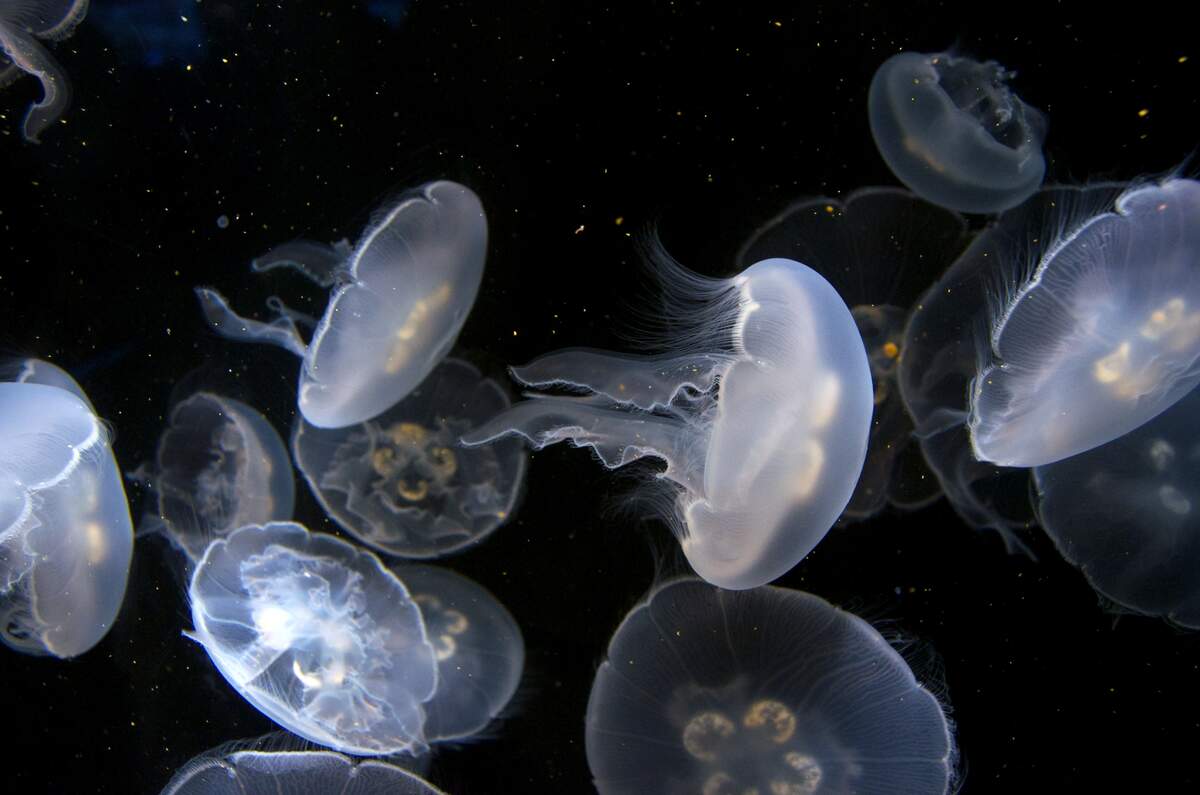

World Jellyfish Day
Jellyfish are appreciated today, from a distance and out of the reach of their stinging tentacles. Naturally, jellyfish have bodies like jelly. Jellyfish consist of about 95 percent water, and are not actually fish, since they are invertebrates that don't have any bones. They have a nerve network, but no central nervous system or brains, nor a circulatory system or respiratory system. Jellyfish stomachs are found in their umbrella-shaped bodies, which are known as bells, and jellyfish have tentacles with cnidocytes, a type of exploding cell.
Found in oceans around the world, most jellyfish eat plankton, fish larvae, and fish eggs, and are eaten by the likes of sharks, sea turtles, dolphins, and tuna and other fish. They range in size: The Irukandji jellyfish weighs less than a tenth of an ounce and has a bell that is two-tenths of an inch in diameter, while the lion's mane jellyfish may weigh over 440 pounds and have a bell diameter of more than six and a half feet.
Jellyfish migrate together in blooms, moving from the bottom of the ocean to its surface. Many, but not all, bloom in the spring, reproduce in the summer, and die in the fall. Some have a lifespan of a few hours and some live for a few years. Many are dangerous to humans, with one of the most dangerous being the sea wasp, a box jellyfish. But if a safe distance is kept from these and other jellyfish today, there is much beauty to appreciate!
How to Observe World Jellyfish Day
Celebrate by viewing some jellyfish at a zoo or aquarium! You could also go to the ocean and find some jellyfish in the wild, but make sure to be safe.





















